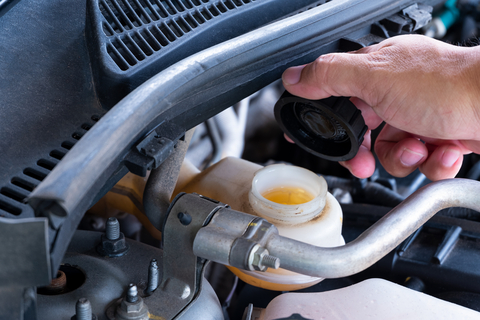Improve Brake Safety With Fluid Inspection

The fluid surging through your brake lines enables everything from gentle slowdowns to those soul-churning emergency stops. Your life literally depends on the fluid, so knowing when to replace it is vital.
Most vehicles don’t have a gauge to monitor the brake fluid, so turn to the owner’s manual or your trusted technician to help properly maintain this vital fluid.
“Brake service usually occurs every 30,000 to 40,000 miles on most vehicles,” said Pat McCleish, head of the technical support team for Centric Parts, the maker of StopTech brakes. “Fluid will be replaced several times over the life of the vehicle.”
Brake fluid connects the pedal to wheel cylinders and the calipers. Fluid rushes through the brake lines, causing components to expand against the wheels and stop the vehicle. How often your brake fluid needs to be replaced depends on a variety of factors including how hard you drive and temperature.
“Under normal driving conditions, brake fluid will last a long time. Under more extreme conditions, brake fluid can require replacement after even a single 20-minute track session if temperatures get high enough to boil the fluid.”
An abnormally soft brake pedal or a decrease in performance are symptoms drivers should be aware of, McCleish said.
“Minor leaks many times will not have any symptoms noticeable from the driver’s seat until all the fluid has leaked out of the system,” he said. “Under extreme conditions where excessive heat is produced in the brake system, a sudden soft pedal can indicate boiling brake fluid.”
McCleish offers the following insights about brake fluid and services:
- Most vehicles don’t have gauges or sensors that track brake fluid. Have your fluid inspected by a certified auto mechanic.
- Ask your service advisor to inspect the quality of your brake fluid. They can use electronic devices or test strips to examine brake fluid. If your fluid fails the test, replace it.
- Replacing brake fluid requires several critical steps for brakes performed by experienced mechanics. As new fluid flows into the brake system, air bubbles must be removed for brake hydraulics to work properly.
- Ask your advisor about getting brake fluid “bled” when installing new brake pads.
- Use brake fluid that’s recommended by the manufacturer. DOT 3 is the most common type of brake fluid.